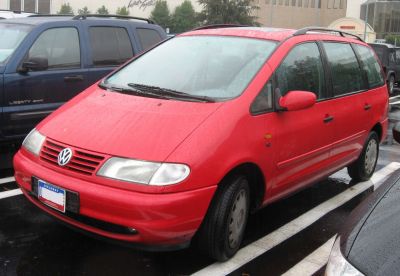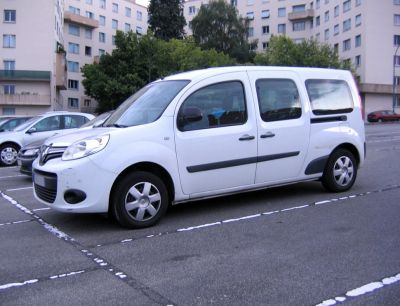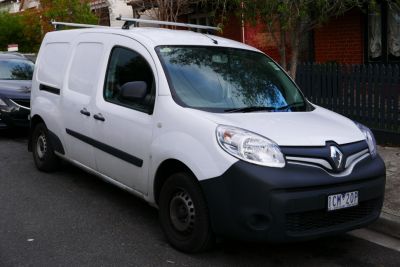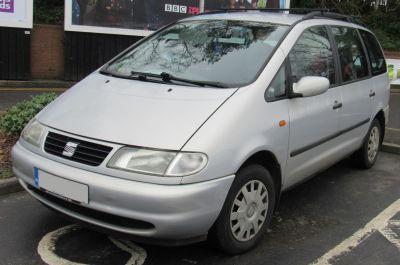 1996 Opel Sintra Dimensions, Size & Specs
1996 Opel Sintra Dimensions, Size & SpecsMeasurements of the 1996 Opel Sintra, engineered for optimal performance and comfort
| Dimensions | |
|---|---|
| Length: | 4670 mm183.9 in15.3 ft |
| Width: | 1830 mm72.0 in6.0 ft |
| Height: | 1780 mm70.1 in5.8 ft |
| Trunk Capacity: | 460 liter16.2 cu ft |
| Trunk Capacity (Max): | 3765 liter133.0 cu ft |
| Weight Specifications | |
| Curb Weight: | 1655-1735 kg3649-3825 lbs |
| Maximal permitted Weight: | 2345-2430 kg5170-5357 lbs |
| Tire Specifications | |
| Rims Size: | 15-inch rims:
|
| Tire Sizes: |
|
The Opel Sintra, produced between 1997 and 1999, is a mid-sized minivan designed to offer spaciousness and practicality for families and cargo needs. Measuring 4670 mm (183.9 inches) in length, 1830 mm (72.0 inches) in width, and standing 1780 mm (70.1 inches) tall, the Sintra boasts a commanding road presence with its broad and tall silhouette typical of 1990s family vans. Its curb weight ranges from 1655 to 1735 kilograms (3649 to 3825 pounds), reflecting robust build quality and solid structural design. The vehicle's maximum gross weight lies between 2345 and 2430 kilograms (5171 to 5357 pounds), allowing it to comfortably carry passengers and cargo within safe limits.
One of the standout features of the Opel Sintra is its impressive luggage capacity. With all rear seats in place, the minivan offers 460 liters (16.2 cubic feet) of storage space—enough for daily errands or short trips. When the rear seats are folded down, the available luggage volume dramatically increases to 3765 liters (132.9 cubic feet), making the Sintra highly versatile for transporting large items or extended travel gear.
The vehicle rides on 15-inch rims (6J x 15), equipped with tires sized 205/65 R15 or 205/65 HR 15, striking a balance between ride comfort and handling stability. Overall, the Opel Sintra reflects late-90s European minivan design priorities: generous interior space, stable road manners, and functional large-capacity storage. It remains a practical choice for families seeking a reliable, roomy, and well-sized vehicle for a broad range of uses.
Discover the standout features that make the 1996 Opel Sintra a leader in its class
Have a question? Please check our knowledgebase first.
The Opel Sintra minivan produced between 1997 and 1999 has a length of 4670 mm (183.9 inches), a width of 1830 mm (72 inches), and a height of 1780 mm (70.1 inches). These dimensions position it comfortably within the mid-size minivan category, providing ample interior space for passengers and cargo while retaining manageable exterior proportions suitable for urban and suburban driving.
The curb weight of the Opel Sintra ranges from 1655 to 1735 kg (3649 to 3825 pounds), depending on the trim and configuration. Its maximum weight, also known as the gross vehicle weight rating (GVWR), lies between 2345 and 2430 kg (5171 to 5357 pounds). This weight range reflects the vehicle's capacity to safely carry passengers, cargo, and fuel without compromising performance or safety.
The luggage capacity of the Opel Sintra is 460 liters (16.2 cubic feet) with the rear seats in use, offering decent cargo space for everyday needs. When the rear seats are folded down, the available cargo volume dramatically increases to 3765 liters (132.9 cubic feet), making it highly versatile for transporting larger items, suitcases, or bulky cargo during family trips or moving activities.
Yes, the Opel Sintra should fit into a standard residential garage. Standard garage door widths generally range from about 2400 mm to 2700 mm (94.5 to 106 inches), while the Sintra’s width is 1830 mm (72 inches), leaving sufficient clearance on each side. Its height of 1780 mm (70.1 inches) also fits comfortably below typical garage door heights, which are commonly around 2100 mm (82.7 inches). However, maneuvering space inside the garage depends on the garage’s overall size and layout.
The Opel Sintra did not have a direct predecessor within the Opel lineup as its production marked Opel's foray into the large minivan segment. The model was introduced between 1997 and 1999 primarily to compete with other large family-oriented minivans. Therefore, it represented a new size category for Opel, offering more interior room and passenger capacity than the smaller Opel models available previously.
The Opel Sintra was comparable in size to other large European and American minivans of the late 1990s. With a length of 4670 mm (183.9 inches) and width of 1830 mm (72 inches), it stood alongside models like the Chrysler Voyager or Ford Galaxy in terms of exterior size. Its sizeable interior, reflected in generous luggage capacity when seats are folded, was competitive within its segment, appealing to families needing spacious and practical transportation.
The Opel Sintra is equipped with 6J x 15 steel rims paired with tires sized 205/65 R15 or 205/65 HR15. This setup strikes a balance between ride comfort, handling, and durability, suitable for the typical driving conditions faced by a minivan designed for family and utility purposes.
With a height of 1780 mm (70.1 inches), the Opel Sintra is relatively tall for a passenger vehicle, typical of minivans which are designed to maximize interior headroom and seating position. This might affect driving dynamics by increasing wind resistance and slightly higher center of gravity compared to sedans, but it benefits passengers through more spacious seating. Parking in low-clearance garages or ramps should be checked beforehand due to this height.
Yes, the Opel Sintra was designed with family use in mind, offering generous interior space through its substantial external dimensions. Its flexible seating arrangement, with rear seats capable of folding flat to provide up to 3765 liters (132.9 cubic feet) of cargo space, makes it ideal for families requiring versatile space for passengers and luggage, whether for daily commuting or longer trips.
The curb weight of the Opel Sintra, ranging from approximately 1655 to 1735 kg (3649 to 3825 pounds), is typical for minivans of its era and size. While heavier weight can slightly reduce fuel efficiency, it also contributes to the vehicle's stability and road presence. The Sintra’s engines and suspension systems were calibrated to handle this weight efficiently, providing a balanced ride quality and acceptable performance for urban and highway driving needs.
Discover similar sized cars.

| Production: | 1995-2000 |
|---|---|
| Model Year: | 1995 |
| Length: | 4620 mm181.9 in |
| Width: | 1810 mm71.3 in |
| Height: | 1730 mm68.1 in |

| Production: | 2013-2018 |
|---|---|
| Model Year: | 2013 |
| Length: | 4666 mm183.7 in |
| Width: | 2138 mm84.2 in |
| Height: | 1802 mm70.9 in |

| Production: | 2013-2021 |
|---|---|
| Model Year: | 2013 |
| Length: | 4666 mm183.7 in |
| Width: | 2138 mm84.2 in |
| Height: | 1802-1826 mm70.9-71.9 in |

| Production: | 2013-2021 |
|---|---|
| Model Year: | 2013 |
| Length: | 4666 mm183.7 in |
| Width: | 2138 mm84.2 in |
| Height: | 1810-1836 mm71.3-72.3 in |

| Production: | 1996-2000 |
|---|---|
| Model Year: | 1997 |
| Length: | 4620 mm181.9 in |
| Width: | 1810 mm71.3 in |
| Height: | 1730 mm68.1 in |
